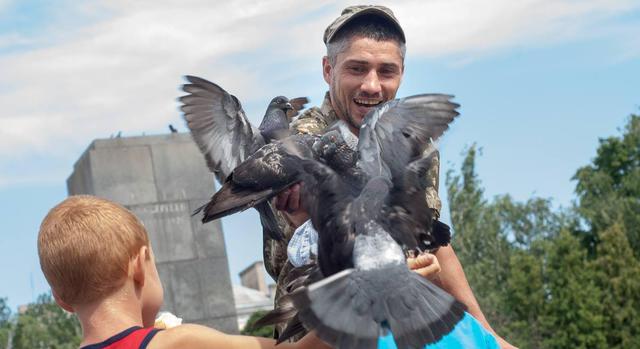Military strategy of Ukraine
The Ministry of Defense and the Armed Forces have grown and changed significantly in 2015, so in order to evaluate the vectors of their development we should look at priorities and major achievements year-end. So, what has changed to better and to worse, where does it stagnate; where do words and actions differ? This is especially important after the state budget for 2016 was approved, with its record 5 percent of the GDP allocated for the defense sector. The society needs to see and understand how the budget funds are spent. We will try to analyze what has been done at the major directions of the Defense Ministry’s development.
Censor.NET' s Chief Editor Yurii Butusov wrote in his article for Dzerkalo Tyzhnia.DEFENSE PLANNING
On Oct. 15, 2015 Ukrainian President Petro Poroshenko, while presenting newly-appointed Defense Minister Stepan Poltorak, entrusted the military with clear tasks:
"Given the military and political situation I set the task for the Minister of Defense - to provide for preparation of major documents on defense planning. They include development of the National defense strategy; the Defense Ministry and the General Staff should start doing that right now. The military doctrine needs to be amended immediately (current situation provides many reasons for that), and the new version of the development program of the Armed Forces of Ukraine, as well as that of the State development program for weapons and military equipment, should be prepared."

More than a year has passed, so we can evaluate the quality of the strategic planning based on the quote above.
On May 26, 2015 the president's decree finalized Ukraine's National Security Strategy.
It defines the major goals:
1. Fight for restoration of territorial integrity within acting borders of Ukraine;
2. Independence from the Russian Federation in the weapons sector;
3. Reforms of all security and defense bodies;
4. Integration with the EU and NATO.
The new Military doctrine of Ukraine has been developed based on the Strategy; it was finalized by the president's decree of Sept. 2, 2015.
The document details the threats and introduces new categories for accurate setting of goals and tasks.
1. For the first time, Russia has been named the major enemy set at destroying Ukraine's sovereignty or seizing part of its territories by all means.
2. Ukraine must fight for liberation of the Russia-occupied territories of the Donbas and Crimea.
3. The security mechanism involves conducting of reforms, strengthening of the state, and the EU and NATO integration. Goals and tasks for the Defense Ministry were set: to conduct reforms under NATO standards in all spheres, starting from army commanding and recruitment. [It also includes] creation of the Special Operation Forces, logistics system, military industry, intelligence community, and combat training under NATO standards.
The National security strategy and the military doctrine may be criticized, but these are the first solutions on the national security in Ukraine which realistically define the enemy and set certain goals to move towards NATO standards. These decisions are totally a positive factor and a foundation for further reform programs.
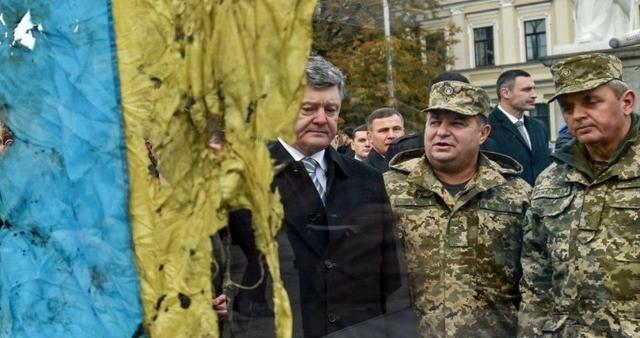
However, these two initial steps were not followed by decisions to implement and finalize development programs. The Defense Ministry and the General Staff have not fulfilled the president's order and have offered neither the Armed Forces development program, nor the weapons development program.
Anyway, these documents are of great importance for they define the future structure of the army, its tasks, and equipment in service. The weapons development program should be elaborated based on the Armed Forces development program.
Without these documents it is not possible to estimate how professional and competent the army development planning is, whether managerial decisions are justified, how the reforms should be conducted, how the military industry shall develop, and what its priorities are. The most important thing for the state and taxpayers is that without basic programs of the defense planning it is possible neither to plan budget expenses, nor control the purpose of the expenses.
For 2015, the Defense Ministry's budget has been allocated as usual, by the 'believe it or not' principle. The generals said how much they needed, the parliament and the government allocated as much as they could, without any idea whether these expenses are justified. A year passed, with discussions and endless meetings in working groups, but the development programs have not been presented for approval. And again, the Defense Ministry offers that the Cabinet and the parliament allocate funds (now they want 5 percent of the GDP) for financing budget draft bill lines which are not backed with real programs and validations.
The generals present the country's authorities with a fact - you need to allocate more money, and this is classified and none of anyone's business what for.
Without the development programs, any meaningful discussion about the military budget is impossible. It is not possible to comprehensively evaluate the effectiveness of the army's administrative apparatus; we can only state the fact of its swelling, which leads to enormous additional costs and does not affect the level of the troops' combat readiness.The president's decree dated May 26, 2015 has provided that the Cabinet inspects the security and defense sector of Ukraine, as well as develops and submits complex proposals on reforming the bodies of the security and defense sector of Ukraine to the National Security and Defense Council by May 30, 2015. According to the parliamentary committee on national security and defense, this plan stipulates that the parliament approves more than 30 relevant reformist laws.
However, these systematic proposals will only start being implemented next year.
To sum up it should be noted that the lack of development program of the Armed Forces disables any reforms and civilian control over the army, as well as control over budget expenses of the Defense Ministry. The Armed Forces development program is currently a key document, the lack of which makes any system processes in the army impossible. Reforms are impossible as well, and one cannot control how the people's money is being spent.
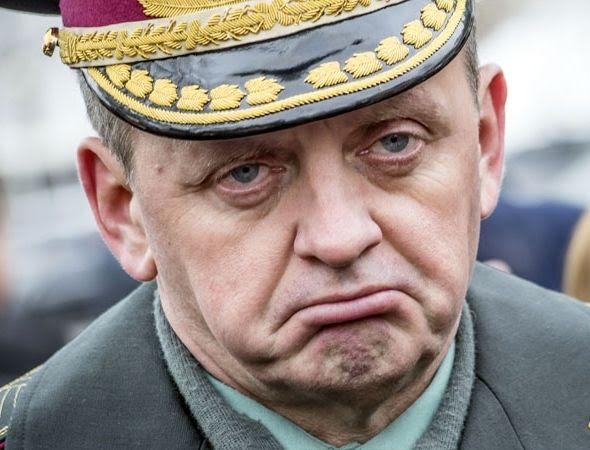
The fact that this document has not been written during the war, and that the president's decree of 14 months has not been implemented are the direct responsibility of the Defense Ministry and the Chief of the General Staff.
This is their joint responsibility, although the initial project was supposed to be developed by the General Staff, and it is the General Staff who is slowing down the development in order to keep manual management of the army, free from control and responsibility.
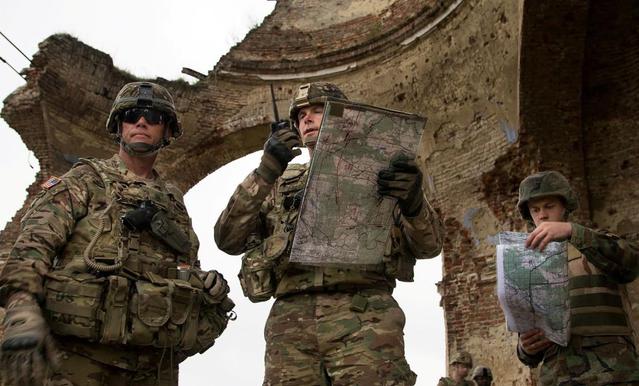
IN RAND WE TRUST
The problem of the General Staff having no strategic decision was obvious back in 2014. So President Poroshenko decided to approach the problem in a single package. Structures related to the Ukrainian authorities have hired one of the leading U.S. analytical centers, Rand Corporation, for development of a detailed step-by-step strategy for reforming the entire security and defense sector in Ukraine.
A group of U.S. analysts arrived in Ukraine, and the Americans invited Archil Tsintsadze as one of the lead-managers for the project. He is the husband of Petro Poroshenko Bloc MP Ivanna Klimpush-Tsintsadze. Archil has been hired by Rand itself because of his experience in development and implementation of a military reform under the U.S. standard.
Thanks to presidential support, Rand was able to set communication with Ukrainian analysts, authorities, NATO bodies, and has developed a logical and wise strategy of changes which deals with the Defense Ministry and the Armed Forces at its first stage.
This reforms strategy is not brand new; it is based on the same principles as other draft reforms that have been developed by analytical centers in Ukraine. But Rand cooperated with all powerhouses and won support for its draft strategy within NATO bodies and among Ukrainian authorities. Whatever criticism Rand's project faced, whatever amendments were suggested, this plan is obviously better than the lack of any constructive suggestions by the General Staff and the Defense Ministry. It is totally realistic and is understood by our Western allies, which is very important.
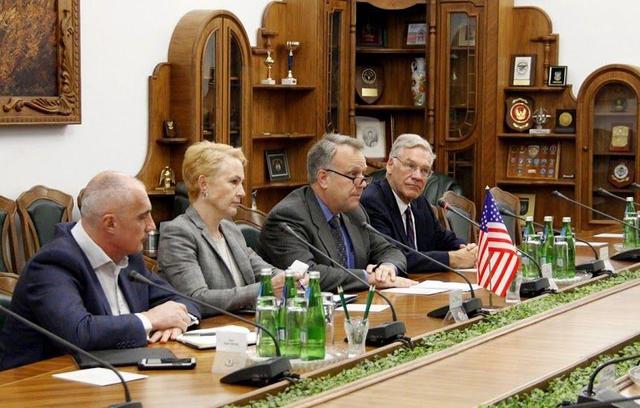


Rand suggested reforms in five sectors, which constitute the first stage of the reforms.
1. Management of the Defense Ministry and the General Staff.
2. Intelligence community.
3. Logistics.
4. Cyber security.
5. Military and technical cooperation.
These projects have been approved and prepared by September 2015. They are intended for implementation over two years, by the end of 2017.
During 2015 our Western partners were receiving slumberous signals from the Ukrainian authorities stating that the reforms will be implemented, but Rand is operating, give us some time.
Although they could have tested and implemented the reforms at separate sectors upon their readiness, our NATO allies were receiving reassurances that the reforms would be started as soon as all suggestions are agreed upon.
Rand suggested that the army reform begins with the following immediate solutions:
1. The Ministry of Defense is a demilitarized structure, and its minister is a civilian.
2. The General Staff will no longer be reporting to the president, but to the defense minister. The president is no longer able to give orders to the Chief of General Staff, to appoint and dismiss him single-handedly; this will be done through the minister.
3. Repeating functions and blurred responsibility between the General Staff and the Defense Ministry should be eliminated. The General Staff takes financial, administrative, and economic responsibilities, while personnel issues are transferred to the Defense Ministry.
4. All non-core assets and property are taken away from the Ministry of Defense and the General Staff and transferred to the Cabinet's responsibility. This includes supporting companies and organizations, construction and maintenance organizations, housing construction, renting of lands and buildings, sale of military property. The Army gets the budget for military purposes only; its entire administrative apparatus for non-core tasks is eliminated.
It goes without saying that after these constructive proposals were presented, the political authorities decided … not to decide on terms of the Rand's strategy implementation. The president is very painful about having immediate authority over the Chief of General Staff. Chief of General Staff Muzhenko assures the president that the army under his command is Poroshenko's foothold in case of not only aggression, but also political crises. The president agrees with Muzhenko on that.
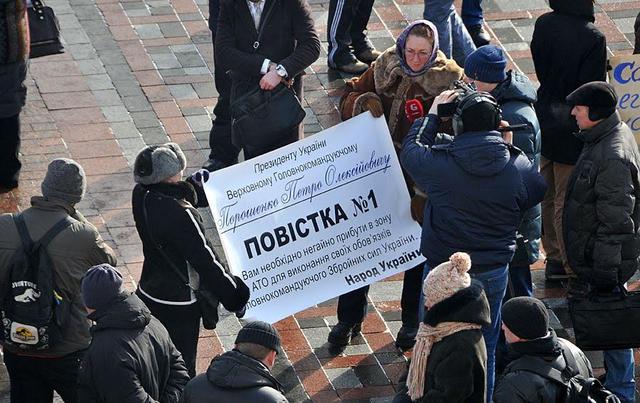
This is why the matter of immediate subordination of the General Staff to the president is crucial for Poroshenko. Using this, the Chief of General Staff is defending his full autonomy from the Defense Ministry.
The immediate subordination of the General Staff to the president, in the absence of civilian control and while maintaining the duplication of functions with the MoD, in fact makes it impossible for the president to effectively control the army. But alas, feudal interests continue to matter more than logic and common sense for Ukrainian authorities. After many months of racing, when Rand was being hurried up with the preparation of the strategy, it suddenly turned out that quick decisions on the project will not be made. As usual. They didn't say "no", but didn't say "yes."The General Staff decided to use its old Ukrainian bureaucratic maneuver and created wide working groups to discuss approaches to the strategy implementation. On Oct. 15 the Chief of General Staff Viktor Muzhenko ordered a large group of executives from the General Staff to study the strategy across various sectors and suggest their proposals. This meant prolonging the case and replace real solutions with the agreement process. It looked even more absurd given that Rand elaborated its strategy together with the General Staff. There were no movements towards its implementation until early December.
The situation changed drastically after U.S. Vice President Joe Biden's visit to Ukraine.
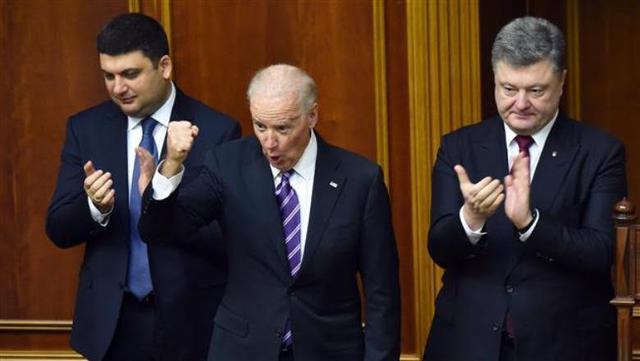
According to ZN.UA sources, during his first day in Ukraine, on Dec. 8, at the meeting with the Ukrainian president Biden expressed his concerns about the absence of structural reforms in the armed forces of Ukraine and the defense sector in general. Biden asked why the Rand's strategy, which is trusted by NATO bodies, is not being implemented. The U.S. Vice President declared expressly that any new project to extend cooperation with Ukraine in the military sector financed by the U.S. should be realized exclusively within the Rand's strategy. If Ukraine doesn't start implementing the strategy, it should not expect increased aid and systematic cooperation.
Biden 's visit has dramatically changed approaches to the strategy's implementation. The president gave concrete instructions on realization of the Rand's project. But this should only happen next year, 2016.
An important amendment will be made to the strategy. The provision stipulating transferring of the General Staff from the president's vertical of power will be implemented at the end of the reform, by late 2017.
Anyway, we need to wait and see until this is announced officially. Two years are a long period of time, never before applied for planning in Ukraine. We will judge from the first steps, for the president unofficially promised to implement the rest of the provisions. Obviously, the Supreme Commander hopes to have Muzhenko as the Chief of Staff for at least two more years, and this fact shows that the probability of the reforms is very tentative and hypothetical.PRESIDENT, NSDC, DEFENSE MINISTRY

Compared to 2014, the president's decision-making system in the military sector has changed.
The president implements a considerable part of the powers in the military-political sector via NSDC Secretary Oleksandr Turchynov, and this has transformed the NSDC to an important communications center responsible for coordination of law enforcement agencies and strategic decision-making of military and political nature.
The influence of the parliamentary committee on defense and security over the president's decisions has increased. The most famous anti-corruption investigations on fuel and other pricing issues in the MoD's public procurement that provided the basis for criminal investigations initiated by the Prosecutor General's Office were initiated in the committee. Former entrusted press secretary of Poroshenko, now committee member Iryna Friz has been included by the president to the working group on drafting of the Special Operation Forces (SOF) law, and the committee's stance on this issue has direct influence on changes in this sector.
Defense Minister Stepan Poltorak has strengthened his influence over the management of the MoD, having received credit of trust from the president in the personnel policy issues. He is authorized to appoint people to all departments of the ministry, including those managing finance and economic matters. In early 2015, logistic issues were controlled by presidential adviser and assistant to the Defense Minister Yurii Biriukov. By the end of the year, after a series of scandals around public procurement and overpricing for procurements of fuel and other supplies, as well as initiation of four criminal cases, the president allowed that Poltorak distanced Biriukov from operational administration, leaving him with management of certain supply projects and PR services for the president and the General Staff commanders. The matters of tender organizations and rear services are controlled by the minister personally.
Coordination between the Defense Ministry and the General Staff is still complicated. The president has completely prevented Poltorak from direct influence over the army commanding.

Decisions on army command and image are made by the president independently, and advise from two people - Muzhenko and Biriukov - are a priority for Poroshenko. The president prefers to deal with military issues personally, because he deems himself the most educated professional in the whole state of these matters, as well as in finance, investment, diplomacy, economy, informational security and many other sectors of state administration. It is true that the president is very knowledgeable and has good memory. However, being able to remember thousands of small facts does not cover for the lack of strategic vision. Favoritism does not help to think critically.
Despite the facts that many smaller issues have been settled and funds are available, the structural reforms are not being conducted, immediate problems are not solved or are solved very late, there is no demand for critical analysis of the army's condition - and, what is worse, any criticism in this realm is accepted very painfully.

Any criticism of the situation in the army is announced "betrayal propaganda" - this allows for not making any systematic decisions and keeping the same administration system and personnel who participated in the army disintegration during Yanukovych era.
All of these downfalls could be named developmental diseases that are inevitable during revolutionary times and normal for the major part of our state system. However, we have been in the state of war for the second year now. The absence of systematic solutions has its price - the army's combat effectiveness.

Valued and priceless human resources - seasoned soldiers who were fighting for a year and received invaluable experience - continue to resign. The absence of the reforms does not allow keeping this 'gold reserves.'
COMBAT EFFECTIVENESS OF THE ARMED FORCES
Army is financed with enough funds to implement structural reforms. In 2015, the Defense Ministry received around 50 mln UAH ($2 mln). The army has seen a visible positive effect from the use of these funds..
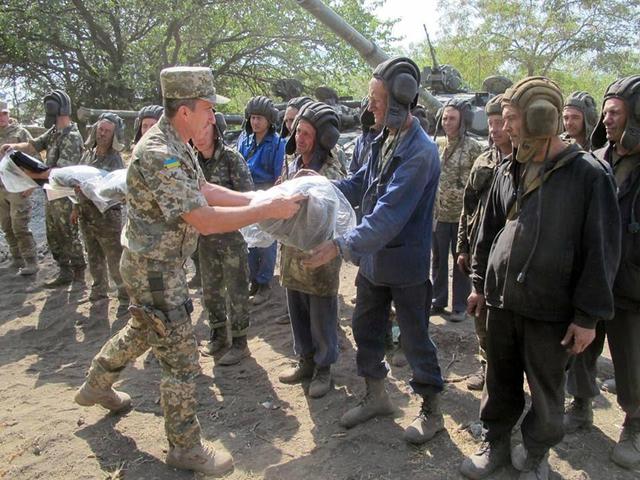
310,000 sets of summer cotton uniform and better footwear have been purchased with these money, as well as additional means for ultra-short wave communication; equipment losses in winter campaign have been replenished. But the use of significant resources only allowed solving separate issues and partial problems. There have been no major breakthroughs of the system.
Not only media, but also official controlling authorities point at the absence of systemic reforms in the Armed Forces. On Dec. 18, the minister of defense issued an assessment of implementation of the major events plan for the MoD in 2015. Stepan Poltorak noted the improper performance of separate tasks assigned to the army by the military and political leadership of the country and stipulated by the laws of Ukraine. It should be noted that Poltorak's view of the situation in the army is more realistic than that of the General Staff leadership: the GS never issues negative reports about the situation in the army - there is only demand for brisk positive and fanfare.
The mentioned document reads:
- Systematic problems in military units lead to deterioration of military discipline and worsening of emotional and psychological climate;
- Violation of weapon handling rules;
- Alcohol misuse;
- Desertion;
- Violations related to improper advantage.
All of this is happening in many military teams. It is especially difficult to fight alcoholism - a new set of administrative measures is to be prepared for fighting with this vice.
Other problems are mentioned in the document:
- Schedule of military equipment supply and repair is violated;
- Systematic violations in food and objects supply;
- Poor supplies of firewood;
- Low level of medical supply.
Financial violations worth of 7.8 billion UAH ($312 mln) have been found in the Armed Forces of Ukraine. The document reads that compensation for damages is being carried out unsatisfactory.
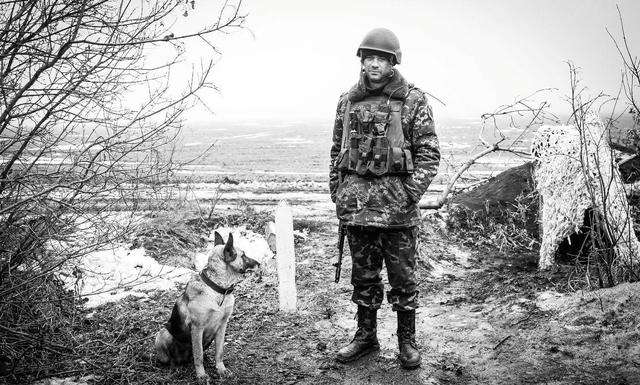
The MoD leadership is especially concerned with the General Staff's inability to implement the plan of creation of the Special Operation Forces, which had been provisioned by the Ukraine-NATO program for 2015.
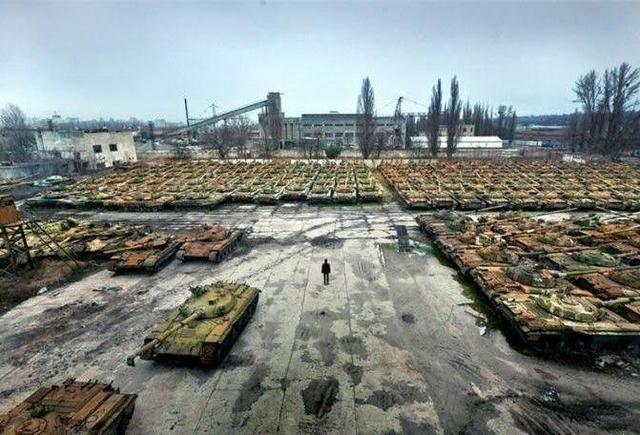
The defense minister demanded to investigate into the facts of financial, economic and administrative violations registered in seven brigades of the Armed Forces of Ukraine. Similar incidents related to uniform supplies, food supplies, and cash collateral payments were recorded in other detachments.
The facts mentioned in the minister's order only reflect the visible part of the army problems. Concrete shortages directly result from fundamental organizational problems.
The army's organizational system does not relate to major threats and the nature of combat tasks, as well as conditions of the local conflict of low intensity. The General Staff declares the need to increase the number of troops in order to increase the density of battle array. This misbelief prevents from changing the structure. Modern warfare does not require global frontline operations. Combat activities are conducted around certain forts and communication lines by flexible combat groups, company-battalions. High level of command, intelligence, communication, the required flexibility, as well as the quality of mechanized infantry are decisive factors that allow inflicting losses to the enemy.
Filling the army with accidental people just for the purpose of troop list filling and funds application is not logical from the military point of view.
If the army's purpose is to fight, then the army's efficiency should be measured through combat effectiveness of its units. Then everything will change automatically.
The most important thing is that interests of soldiers from the battle advanced forces would be on top of the reforms. This soldier is the one who is on top of the planning and whose needs and tasks will be a starting point when calculating budget for salaries, supplies, equipment, and combat training.
As soon as the army gets focused on attracting volunteers and seasoned fighters instead of simply and uselessly filling the ranks, the quality will become a top priority. This should be the point of the reform, which is so much needed by the Armed Forces of Ukraine.Partial mobilization is absurd. Given the total corruption in enlistment offices and absence of a clear draft plan, the mobilization plan is implemented due to motivated people or those who can only get a job in the army.
ZN.UA noted many times: the army should include units of three combat readiness levels.
Forward forces are the most battle-ready units equipped with motivated personnel. They should conduct combat tasks at the frontline and be reinforced and refilled as the matter of priority.
Second echelon forces are designed for conducting limited combat missions in combat area, but not at the frontline.
Finally, third echelon forces allow for the presence of unmotivated people. Their goal is to perform tasks for combat training outside the ATO area. This is where reinforcement for the major forces should be educated, trained and prepared. This is the only approach that can secure rational concentration of resources and trained personnel, which will significantly improve the combat capability of the army and allow relying on combat effective units capable of conducting maneuvering fighting.

The General Staff is preparing to a hypothetical large-scale war with Russia, but increase of the number of HQs and detachments on the map does not mean increased combat effectiveness. To the opposite - diversion of resources and lack of personnel slow down military building and lead to inappropriate state budget expenses.
44,000 officers are being paid for servicing in the Armed Forces, but at the frontline, platoons are often commanded by sergeants, and the lack of junior commanders is hundreds of people. Due to the huge scale of the non-core activities, more than 50,000 people working in the armed forces are civilian employees.
